Hey everyone, welcome back to Retro Freak Reviews! Today, we’re taking a trip down memory lane to explore the evolution of a classic gaming license which has defined a whole genre. Get ready to join us as we delve into every single game from said license from the beginning to the present day.
I’m sure almost everybody knows about traditional Tabletop Role-Playing Games (TTRPGs). You’ve got the Dungeon Master (DM), who sets the stage, dishes out quests, throws monsters at the players, and ensures everyone follows the rules. Then you’ve got the players, each with their own character, created either by themselves or pre-rolled by the DM, complete with stats. And of course, the success or failure of almost every move the players make is decided by a dice roll.
And no TTRPG is more famous than Dungeons & Dragons. It’s so popular that it’s the face of the TTRPG genre. D&D was originally designed by Gary Gygax and Dave Arneson and debuted in 1974 (which makes it 50 years at the time of writing), published by TSR. It caught on quickly with teenagers and college students. Those college students, particularly the Computer Science crowd, played a big part in crafting the first Computer RPGs (CRPGs).

The Quest Begins, on The Mainframe…
According to Matt Barton’s book, Dungeons & Desktops, back in the 1970s, US universities were hooked up to mainframe computer networks. Those networks played a big role in laying the groundwork for the World Wide Web (WWW) we all know and love today. College students had access to mainframe terminals and used them to code their software, even basic computer games. It’s no wonder that D&D fans jumped on the bandwagon and started coding their dungeon crawlers, complete with character stats, levels, monsters, hit points, etc.
The first-ever known CRPG is Dungeon, originally made by Don Daglow for the PDP-10 mainframe between 1975 and 1976. But two other CRPGs from that time were directly influenced by D&D: dnd, created by Gary Whisenhunt and Ray Wood in 1975, and DND, made by Daniel Lawrence in 1977. Even though these games were based on D&D, they weren’t officially licensed products.
Other popular CRPGs from that era, not just inspired by D&D but also by The Lord of the Rings books, were created for the PLATO mainframe between 1976 and 1979 (like Moria, Orthanc, Oubliette, and more). Believe it or not, you can still enjoy these games (including dnd) on www.cyber1.org.
.jpg&f=1&nofb=1&ipt=e03b5c069f53920961eeccff781b5863a9a4f4e7912304da62010856da6a6cd3&ipo=images)
The Mattel Era
The first D&D licensed electronic game was this LCD handheld called Dungeons & Dragons Computer Fantasy Game by Mattel, back in 1981. It was all based on the electronic D&D board game of the same name, also by Mattel. This one’s a basic game where you gotta explore this maze grid, watch out for pits and bats, and scrounge around for weapons to take down a dragon.
Mattel created two more D&D games for their console, the Intellivision. The first one, Advanced Dungeons & Dragons: Cloudy Mountain, came out in 1982. It’s like an action-adventure game where you’ve got a bow and only 3 arrows, and you’ve gotta navigate through a bunch of mazes inside some mountains, take out monsters, and stock up on more arrows and stuff. All this to reach the Cloudy Mountain, where the Crown of Kings is being guarded by a pair of dragons.
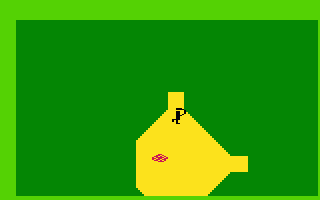
The second game, Advanced Dungeons & Dragons: Treasure of Tarmin, came out in 1983 for Intellivision and Mattel Aquarius, which makes it the first D&D-licensed computer game. In this game, you wander through a dungeon in first person, battling monsters and finding stronger weapons to take down the Minotaur and nab the treasure it’s guarding.
But in 1984, Mattel shut down their video game division, Mattel Electronics, to focus on their more profitable stuff, effectively ending their partnership with TSR. And the video game crash of 1985 put a stop to the making of more D&D video games.
The SSI Era Part 1: The Golden Standard
The late ’70s and the early ’80s were the starting point for blooming software developers. They experimented with user-friendly programming languages like BASIC on home computers such as the Apple II, crafting their initial software, including games, and exchanging it within their community. While some of these trailblazers marketed their creations to small publishers for distribution and sale, others established their own software companies.
Three really famous and important CRPG series that began in the early 80s are Richard Garriot’s Ultima series, Rogue (the OG roguelike and roguelite trailblazer), and Sir-Tech’s Wizardry series (which made a splash in Japan and left its mark on the JRPG genre). These series set the stage for the whole CRPG scene and we can still feel their impact today.

In the meantime, TSR attempted to develop their own video games; however, in 1987, they decided to look for a studio to produce D&D licensed titles. After considering various options, they selected Strategic Simulations Inc. (SSI), a studio specializing in war computer games. SSI developed the Gold Box engine and released their first D&D game in 1988.
The Gold Box engine received its name due to the gold border in the box art. It follows the Advanced Dungeons & Dragons (AD&D) 1st edition ruleset, offering a character creation feature with several races and classes, each with unique stats and experience levels. The engine comprises two main game modes: a first-person exploration mode and a turn-based battle mode with a top-down view. Additionally, it includes an overworld map and the capability to import your party from previous titles. Over the years, the engine has been upgraded with improved graphics, sound, and music, as well as the addition of more races and classes.
Pool of Radiance was first released in 1988 and is set in the Forgotten Realms. Players can form a party of six adventurers to take on numerous quests in New Phlan and beyond. One of the notable features of this game is the Adventurer Journal, which contains several entries intricately woven into the storyline, providing a deeper immersion into the gameplay experience.
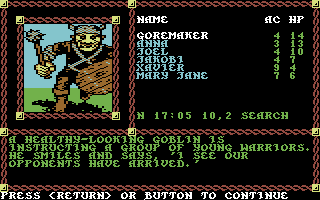
Next came Curse of the Azure Bonds, which came out in 1989. The game is based on the book Azure Bonds by Kate Novak and Jeff Grubb. You can import your party from either Pool of Radiance or Hillsfar (which we’ll refer to later). The party wakes up in Tilverton with no gear or memory of how they got there, and strange marks on their arms. The party’s gotta figure out what went down and solve the mystery of those markings.
The next game is Secret of The Silver Blades, released in 1990. This time our party travels to a small mining town under siege by monsters led by an evil lich called Eldamar, who was entrapped in a glacier by his brother, Oswulf and a group of adventurers called the Silver Blades, but he’s now free. The party must search for a way to get into the lich’s castle and defeat him.
The final game of the initial Gold Box series is Pools of Darkness, released in 1991. Our party returns to New Phlan to escort a council member but upon leaving the city, Lord Bane wreaks havoc throughout the land of Faerûn. The party must travel through portals (called pools) to other dimensions to find and defeat Bane’s lieutenants.

Another Gold Box series is a trilogy set in the Dragonlance setting, with the first one called Champions of Krynn, released in 1990. Because it’s the first game of a series, there’s no party import, you need to create a new party of six adventurers, now with the option of selecting races and classes native to the world of Krynn. The game occurs after the events of the War of the Lance in the Dragonlance novels and our party must do a series of quests for the Knights of Solamnia.
The next game in the trilogy is Death Knights of Krynn, released in 1991. One year after the events of the previous game, our party faces an undead threat created by an iconic Dragonlance villain, whom our party must find and defeat, along with several sidequests to complete. It features the same new options that debuted in the previous game.
The final game in the trilogy is The Dark Queen of Krynn, developed by Micromagic and released in 1992. After the events of the last game, our party travels to the continent of Taladas on behalf of General Laurana (from the Heroes of the Lance) to investigate a series of rumours. The party then encounters and must find a way to defeat another iconic Dragonlance villain.
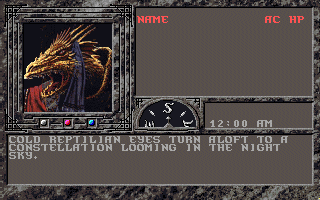
But SSI returned to the Forgotten Realms with two more Gold Box games, Gateway to Savage Frontier (released in 1991) and Treasures of the Savage Frontier (released in 1992); both developed by Beyond Software. In Gateway to Savage Frontier, you again create a party of six adventurers to travel to the eponymous Savage Frontier to investigate the actions of the evil organization Zhentarim.
In the follow-up, Treasures of the Savage Frontier, our party is summoned by the wizard Amelior Amenitas to help the dwarves recover the city of Llorkh from the Zhentarim but are branded as traitors. So, our adventurers must clear their names and stop the machinations of the Zhentarim and their allies.
But there are three more standalone D&D Gold Box titles that we have to talk about: Neverwinter Nights (not to be confused with the Bioware titles of the same name), Spelljammer: Pirates of Realmspace and Forgotten Realms: Unlimited Adventures.
Neverwinter Nights, developed by Beyond Software and released in 1991, is considered the first graphical MMORPG where America Online (AOL) users can create a character and join parties with other players in the city of Neverwinter, in the Forgotten Realms, to embark on several PVE adventures. It ran until 1997 when the servers were disconnected although a single-player conversion was released in 2012.
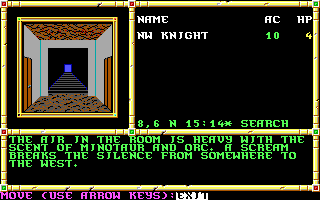
Spelljammer: Pirates of Realmscape, developed by Biotech and released in 1992, is set in the Spelljammer setting, where the player creates a character to captain a spell jammer ship and travel through the Realmspace to ferry goods between planets and take on several missions to raise their reputation. Due to its unique setting, the game was designed with its own engine instead of the Gold Box engine and features the AD&D 2nd edition ruleset along with space travelling, combat between ships, boarding, etc.
Forgotten Realms: Unlimited Adventures, the final Gold Box title, developed by MicroMagic and released in 1993 is not a game but a construction kit to make modules using a variation of the Gold Box engine. It comes bundled with a pre-made module, Heirs to Skull Crag. Throughout the years, several mods and programs were made which extend the kit’s capabilities and active module communities can still be found nowadays.

The SSI Era Part 2: Silver Box and Other 80s Games
But the Gold Box games weren’t the only D&D-licensed games published by SSI in the 80s and 90s. They also released other games in other genres, especially a small series of games that would be later compiled in a collection called The Silver Box (due to the silver border on the box art). The Silver Box collection contains games based on the Dragonlance novels and modules, created by Margaret Weis and Tracy Hickman.
The first Silver Box game is Advanced Dungeons & Dragons: Heroes of the Lance, developed by SSI and U.S. Gold and released in 1988. It’s a side-scrolling action game where the player takes control of eight adventurers (the eponymous Heroes of the Lance), each with their own fighting style, attacks and spells. The player can only control one character at a time but can switch between them, at any time.
The next Silver Box game is Dragons of Flame, developed by U.S. Gold and released in 1989. Again, it’s an action game but now with a top-down view for travelling between locations and a side-view for battling enemies. You control the same eight characters from the previous game but you can now add two more.
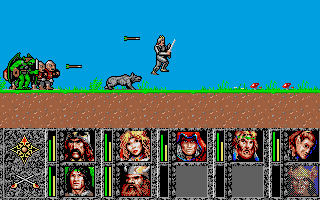
The third Silver Box game is Shadow Sorcerer, developed by U.S. Gold and released in 1991. This time, it’s a light RPG where the player controls a party of four characters and must escort a group of refugees through the wilderness on an overworld map. All the battles and dungeon exploration are on an isometric view and the player must transverse the region while protecting the refugees.
There’s one more Dragonlance game that wasn’t part of the initial Silver Box collection but was added on later compilations, War of the Lance, developed by SSI and released in 1989. It’s a turn-based strategy game with a top-down view. The player controls the Whitestone army and must capture the enemy’s capitals in single-player mode. In two-player mode, the second player controls the Highlord forces.
There was one more D&D game that SSI released in 1989: Hillsfar, developed by Westwood Associates. It’s another light RPG with action elements set in the Forgotten Realms. The player can select a pre-made character, create one or import one from Pool of Radiance. The player explores the city of Hillsfar and does several missions from their class guild. The missions are divided into mini-games, like fighting in the arena, riding a horse through a course, competing on an archery range, etc.
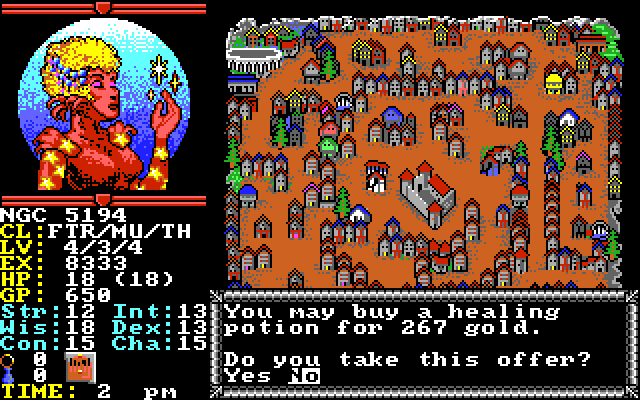
The SSI Era Part 3: The 90s and The End of an Era
As seen before, by the time the 90s rolled out, the Gold Box engine was already outdated compared with other CRPGs from the same period. So, TSR demanded SSI to stop using the Gold Box engine, which prompted the release of Unlimited Adventures. SSI then became mostly a publisher releasing D&D-licensed games developed by other companies.
One of those companies was Westwood Associates, later known as Westwood Studios, which made a more advanced game engine based on FTL’s Dungeon Master, a first-person dungeon crawler with real-time combat, cinematic cutscenes and more. Westwood would develop two games for SSI before being acquired by Virgin in 1992: Eye of the Beholder and Eye of the Beholder II: The Legend of Darkmoon.
Eye of the Beholder was released in 1990 and follows the AD&D 2nd edition ruleset. An evil presence lurks in the sewers underneath the city of Waterdeep, in the Forgotten Realms campaign setting, and the Lords of Waterdeep hire a group of adventurers to go down to the sewers and investigate. The player then creates or selects a party of four adventurers, with the option to recruit two more.
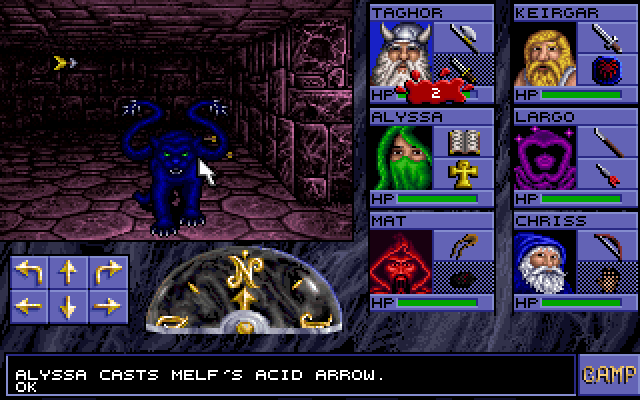
The sequel, Eye of the Beholder II: The Legend of Darkmoon was released in 1991. After the last game’s adventure, our party (which can imported from the previous game) receives a message from Khelben “Blackstaff” Arunsun, Waterdeep’s Archmage, who asks the party to investigate the Darkmoon temple and look for Amber, his scout. This time, the exploration isn’t limited to dungeons, as the game starts in the woods surrounding the temple.
There’s also a third title in the series, Eye of the Beholder III: Assault on Myth Drannor, but it was developed by SSI using a new similar engine called the AESOP engine, which adds some new features, like a new button that allows for an all-party melee attack. After the events of the last game, our party (which, again, can be imported) is abducted by a mysterious man to save the city of Myth Drannor from an evil lich.

Another trilogy of games also released by SSI during this period is the Dark Sun trilogy. Developed by SSI and set in the Dark Sun campaign setting, these games showcased a new engine with a top-down view, larger sprites, improved animation, and time-based battles.
The first one is Dark Sun: Shattered Lands, released in 1993. Using a variant of the AD&D 2nd edition ruleset, the player creates a party of four adventurers, who were captured, sold as slaves and are now forced to fight in the Draj arena as gladiators. The party must escape the arena into the desert and find a way to unite the free people against the tyranny of Draj’s wizard king.
The following game is Dark Sun: Wake of the Ravager, released in 1994 for MS-DOS. By creating a new party or importing from the previous game, the player now travels to the city of Tyr, where they must stop the machinations of the Dragon and his second-in-command from summoning the Ravager, an unstoppable force of nature.
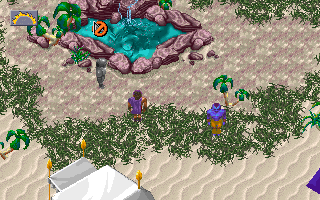
The trilogy concluded with the release of Dark Sun Online: Crimson Sands, an MMORPG that debuted in 1996. Offering a diverse range of eight races and classes for character creation, the game allowed players to engage in guilds and explore both PVE and PVP content. Despite its eventual disconnection in 1999, the online servers hosted an active community throughout its tenure.
Before we continue with the next series, let’s mention all the stand-alone D&D games published by SSI around this time:
In 1990, DragonStrike was released. Developed by Westwood Associates and set in the Dragonlance campaign setting, it’s a dragon jousting/flight simulator, where the player is a Knight of Solamnia during the War of the Lance. The player must take control of several metallic dragons and fight the chromatic dragons and their armies through several missions.

Westwood tried to port DragonStrike to the NES but it was beyond the console’s capabilities. So, a top-down shoot-’em-up was developed instead. Published in 1992 by Pony Canyon, the player now chooses between three metallic dragons (Bronze, Silver and Gold) and must accomplish several missions and defeat the Dragonarmies.
In 1993, Fantasy Empires was released for MS-DOS. Developed by Silicon Knights and set in the Mystara campaign setting, it’s a strategy game where players create a character with some gold and a small army and must expand their territory and armies using either magic, war and/or diplomacy. The battles are all in real time with an overhead perspective.
Also in 1993, Stronghold was released. Developed by Dan Daglow’s Stormfront Studios (previously known as Beyond Software), it’s another strategy game where the player must build, manage and expand a town with a central castle and amass armies to defend it and attack enemies’ strongholds.
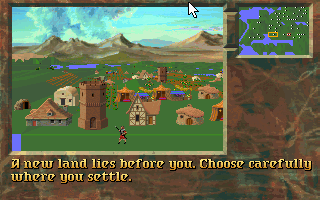
Another game that hit the shelves in 1993 was Dungeon Hack. Crafted by DreamForge Intertainment using the AESOP engine, this title is a first-person dungeon crawler with roguelike features. Set in the Forgotten Realms campaign setting, players get to create or choose a character using the AD&D 2nd edition ruleset and embark on a journey into a procedurally generated dungeon, which can be tailored to their preferences.
In 1994, Al-Qadim: The Genie’s Curse was released for MS-DOS. Developed by Cyberlore Studios. It’s an action RPG (ARPG) with a top-down view. Set in the Arabian Nights-inspired Al-Qadim campaign setting, the player controls a corsair who must clear his family name, save the Caliph’s daughter and stop the evil genies.
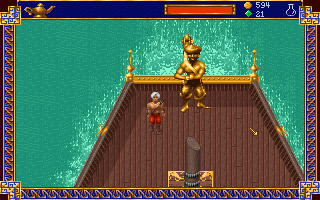
Apart from the console ports of several of the previous titles, SSI also published some exclusive console games, for several platforms, all set in Mystara:
The first one, Order of the Griffon, was developed by Westwood Associates and released in 1992 for the TurboGrafx-16/PC-Engine. The player selects four characters out of a pool of 21 premade characters. The party is hired by Lord Korrigan to investigate rumours of undead monsters and werewolves in the region. The game uses the Eye of the Beholder engine for exploration but all the combat is turn-based, on a top-view perspective, similar to the Gold Box games.
Another game released in 1992 was Dungeons & Dragons: Warriors of the Eternal Sun, developed by Westwood Associates for the Sega MegaDrive/Genesis and set in the Hollow World sub-setting. In the intro, Duke Barrik’s castle is being sieged by a goblin army, when suddenly, the castle, along with everybody, is teleported to a strange valley surrounded by tall cliffs and a perpetually red sun in the sky. The player creates four adventurers who are ordered by the Duke to explore the mysterious valley. Unlike the previous game, all outdoor exploration and combat are in a top-down view, while all indoor exploration and combat are in first-person.

Next, we have two beat ’em ups with some light RPG elements developed by Capcom for the arcade: Dungeons & Dragons: Tower of Doom and Dungeons & Dragons: Shadow over Mystara.
The first one, Tower of Doom, was released in 1994. Up to four players choose between four playable characters (a cleric, a dwarf, an elf or a fighter), tasked with the mission to save the region of Darokin from a monster army led by the Arch Lich Deimos, who resides in the eponymous Tower of Doom.
The sequel, Shadow Over Mystara, was released in 1996. It adds two more characters to the character selection: a magic user and a thief. The story picks up two years after the last game, with the party exploring the lands of Giantri and Darokin, fighting the army of the mysterious sorceress Synn.
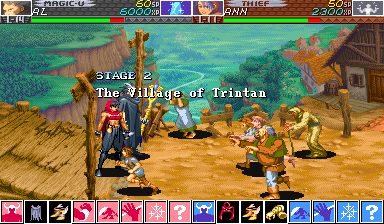
Both games were later compiled in Dungeons & Dragons Collection, released in 1999 for the Sega Saturn, and in Dungeons & Dragons: Chronicles of Mystara, released in 2013 for the PlayStation 3, Xbox 360, WiiU and Windows.
In 1992, an important landmark in PC gaming history was released: Ultima Underworld: The Stygian Abyss by Blue Sky Productions and Origin. What makes it so important and influential is that it’s the first dungeon crawler featuring a full 3D perspective with 360º movement. Other games, like iD Software’s Wolfenstein 3D and Doom, would adopt this unique perspective and inspire other games.
Enter Dreamforge Intertainment, which creates a new first-person dungeon crawler engine, based on the engine used in Ultima Underworld, with its full 3D perspective and 360º movement. Dream Forge would develop three D&D CRPGs for SSI: Ravenloft: Strahd’s Possession, Menzoberranzan and Ravenloft: Stone Prophet.
The first game in this loose trilogy is Ravenloft: Strahd’s Possession, released in 1994. Set in the horror-gothic Ravenloft campaign setting, the player creates two adventurers (with the option of recruiting two more), who get trapped in the land of Barovia, ruled by the vampire lord Count Strahd Von Zarovich. The player must defeat the count and find a way to escape Barovia.
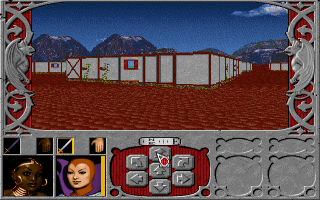
Sometime later in 1994, Menzoberranzan was also released. Set in the Forgotten Realms campaign setting, the player creates two adventurers who witnessed a village attacked by the evil Drow, who kidnapped several villagers. The adventurers are recruited by the captain of the guard to travel to the underground city of Menzoberranzan to save the kidnapped villagers. For such a task, the player must first find and recruit the iconic D&D character Drizzt Do’Urden.
In 1995, Ravenloft: Stone Prophet was released. In this sequel to Strahd’s Possession, the player creates or imports two characters from the previous game. The player now travels to the Egyptian-themed desert of Har’Akir, cursed by the ancient pharaon Anhktepot and besieged by monsters. The player must find the Stone Prophet obelisk, which contains the information to lift the curse and stop the mummy of Anhktepot.

Other two 3D first-person dungeon crawlers released around this time were Advanced Dungeons & Dragons: Slayer and Deathtrap, both developed by Lion Entertainment and originally released for the 3DO.
Slayer (aka Lost Dungeon in Japan), released in 1994, uses a 3D engine similar to Doom and Elder Scrolls Arena. The player creates or chooses a character (with character portrays taken from Eye of the Beholder) and enters a procedurally-generated dungeon that can be customised, like in Dungeon Hack.
Its sequel, Deathkeep, was originally released in 1995 and ported to Windows in 1996. It uses a full 3D engine where the player chooses between a dwarven fighter, an elven mage and a half-elven fighter/mage and must explore a big castle and defeat an evil necromancer.
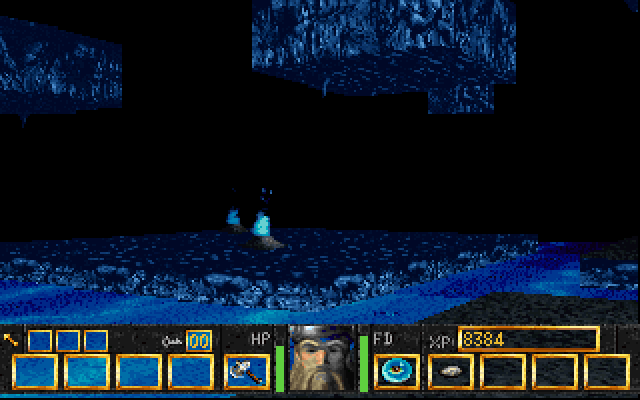
In 1994, SSI and TSR decided to part ways (although SSI continued to co-publish and compile D&D games until 1996) and shortly after, SSI was acquired by publisher and developer Mindscape.
TSR would later partner with Interplay Productions, later known as Interplay Entertainment. But before we jump to the next chapter, let’s reference two more titles from this period that weren’t published either by SSI or Interplay: Iron & Blood: Warriors of Ravenloft and Birthright: The Gorgon’s Alliance.
Iron & Blood: Warriors of Ravenloft is a 3D fighting game developed by Take-Two Interactive, and published by Acclaim Entertainment for the Sony Playstation and MS-DOS in 1996. Set in the Ravenloft setting, the player chooses between 16 characters divided between heroes and villains. The game features not only a single-player campaign and a versus mode, it also features a two-player co-op campaign.
Birthright: The Gorgon’s Alliance is a turn-based strategy game with some light RPG elements. Developed by Synergistic Software, published by Sierra On-Line in 1996 for Windows and ported for MS-DOS in 1997, it’s set in the Birthright setting. The player takes command of a regent of a nation in the land of Anuire and must expand and explore the rest of the land while interacting with the other regents. The game features an overhead map view and a 2D/3D view for the combat.
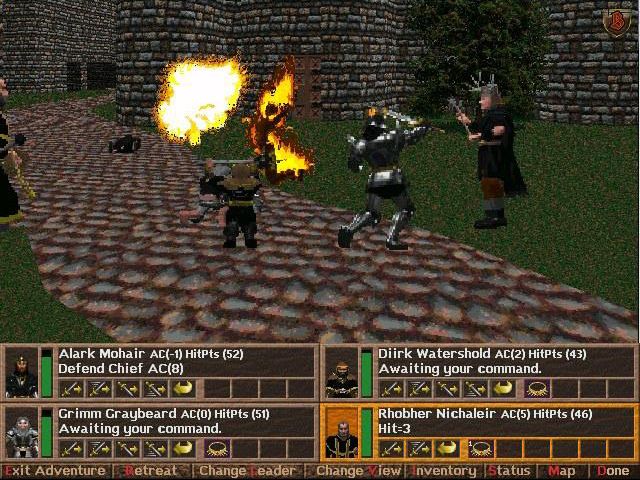
The Interplay Era: to Infinity and beyond
Interplay was awarded a non-exclusive D&D license by TSR, becoming mostly a publisher, awarding sub-licenses to other studios and working as an intermediate of sorts between these studios and TSR.
The first game published by Interplay was Blood & Magic, a real-time strategy (RTS) title developed by Tachyon Studios and released in 1996 for MS-DOS. Set in the Forgotten Realms, the single-player campaign is divided into five scenarios where the player can create basil golems, which can be used to harvest mana and build units and buildings. The game features a 2D top-down perspective, reminiscent of other RTSes like Dune II and Warcraft.
But Interplay would develop their own D&D game, Descent to Undermountain. Released in 1997 for Windows, it uses the same 3D engine as Descent, an FPS shooter. Set in the Forgotten Realms, the player creates an adventurer hired by Klebhen “Blackstaff” Arunsun of Waterdeep to do several quests in the titular Undermountain.
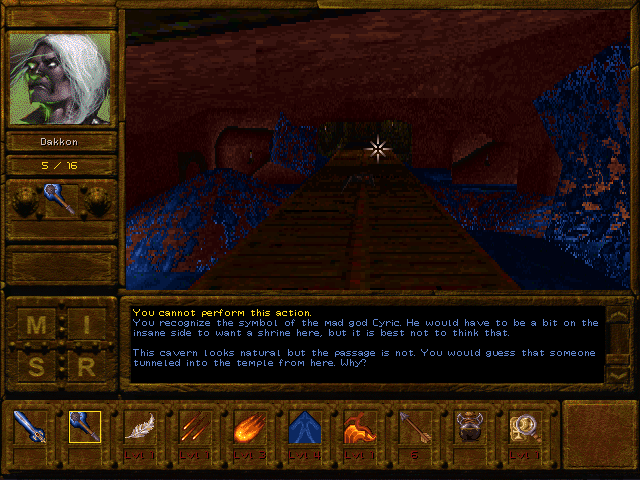
Descent into Undermountain was so badly received by critics and players that Interplay focused on being a publisher instead, especially after Wizards of the Coast (WotC) bought TSR in 1997 which was later bought by Hasbro the following year. But Interplay was able to maintain their license, for the time being. Enter Black Isle Studios, a subsidiary of Interplay, and BioWare, a small Canadian studio with only one game under their belt (Shattered Steel).
BioWare developed the Infinity Engine, which features an isometric top-down view with pre-rendered 2D backgrounds and sprites for the characters, similar to Interplay’s Fallout but adapted to the D&D ruleset, with the combat being real-time with pause, where the player can pause the combat at any time to issues orders to the party.
The first game to be made with this engine was Baldur’s Gate, released in 1998 for Windows PC and ported to MacOS in 2000. Set in the Forgotten Realms, the player creates an adventurer who was raised in Candlekeep by the mage Gorion but one night after surviving an attack by a mysterious armoured figure, he must find the reasons behind the attack and avenge his father figure with the help of several recruitable NPCs. The game also features a multiplayer mode where up to six players can form a party.

Baldur’s Gate received an expansion in 1999 called Baldur’s Gate: Tales of the Sword Coast which adds a new area with new quests, tweaks, improvements and a raise on the experience cap. Gorion’s Ward (the player character) and their companions travel to the small town of Ulgoth’s Beard, where the mage Shandalar asks for assistance in recovering an important item.
In 1999, Black Isle used the Infinity engine and created Planescape: Torment within the Planescape setting. Players assume the role of The Nameless One, an amnesiac immortal navigating the city of Sigil in search of his lost identity and memories. The game introduces a modified version of the D&D ruleset, enabling class changes, and emphasises narrative and dialogue over combat.
The much-awaited sequel to Baldur’s Gate, Baldur’s Gate II: Shadows of Amn, debuted in 2000. Players once again assume the role of Gorion’s Ward, with the option to create, choose, or import a character, embarking on a quest to confront the formidable mage Jon Irenicus in Athkatla, the capital of Amn. This instalment introduces new classes, specialisation kits, and the returning multiplayer mode.
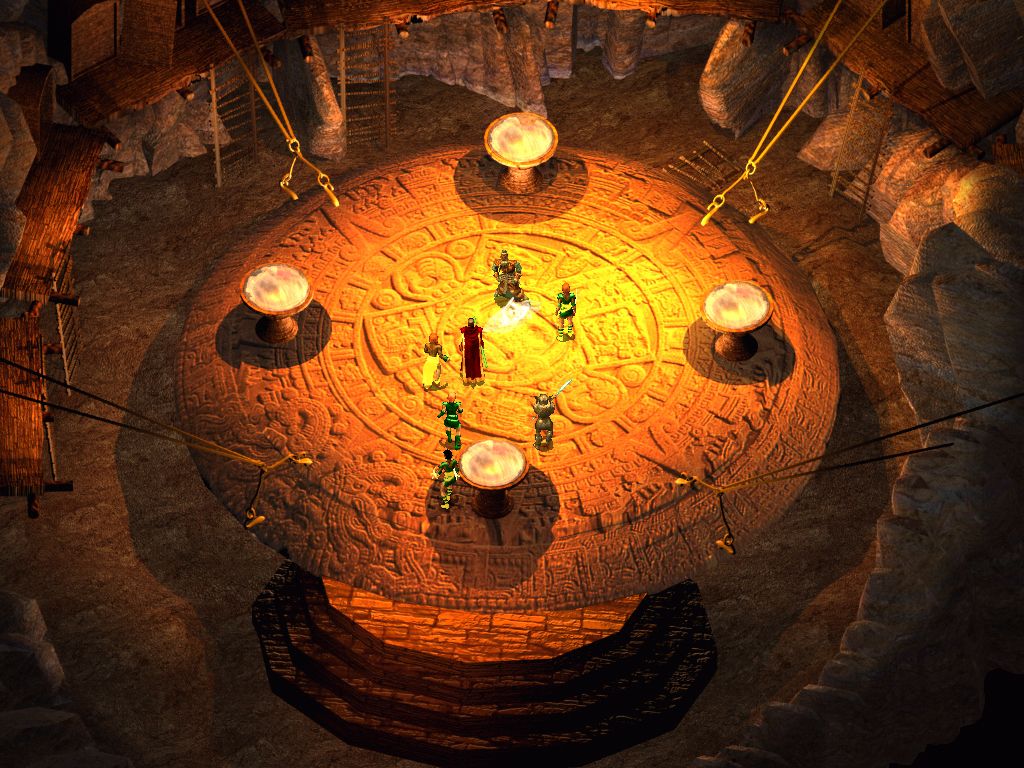
Just like the first game, Baldur’s Gate II also received an expansion, Baldur’s Gate II: Throne of Baal. Released in 2001, this expansion features new quests, new lands to explore, new NPCs to recruit, a new mage specialisation kit and a new dungeon full of hard enemies to vanquish. It’s the final chapter of the Baldur’s Gate saga and the last game developed by BioWare using the Infinity engine.
In going back to the Infinity Engine, Black Isle rolled out two new games and two expansions. The first one, Icewind Dale, hit the scene in 2000, set in the Forgotten Realms. The game follows the player as they create a party of six adventurers, called to Easthaven in the titular region of Icewind Dale by Hrothgar. What’s their objective? To help Hrothgar organise an expedition to Kuldahar, driven by some intriguing rumours. It’s worth noting that the game heavily focuses on combat, instead of dialogue and storytelling.
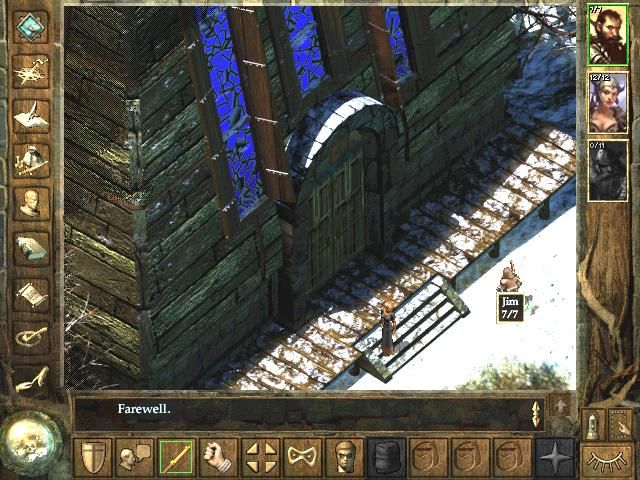
Icewind Dale was expanded with two thrilling additions: Icewind Dale: Heart of Winter and Icewind Dale: Trials of the Loremaster. The initial expansion, launched in 2001, introduces an intriguing new location known as Lonelywood. Here, players are tasked with aiding the barbarian shaman, Hjollder, to prevent the barbarian tribes from initiating a war against the Ten Towns.
The second expansion, released in 2001 as a free add-on, tasks the party with the recruitment by the halfling Hobart Stubbletoes to confront the challenges posed by the titular Loremaster. This formidable character resides in a ruined castle on the treacherous Anourach desert, teeming with traps and monsters.
The final game developed with the Infinity engine, Icewind Dale II, emerged in 2002. The game effectively incorporates the D&D 3rd Edition ruleset, preventing the import of a party from the prior game. It necessitates creating or selecting a new party of adventurers to assist the town of Targos against an army of goblins. Subsequently, players delve into uncovering the mastermind behind the goblin threat.
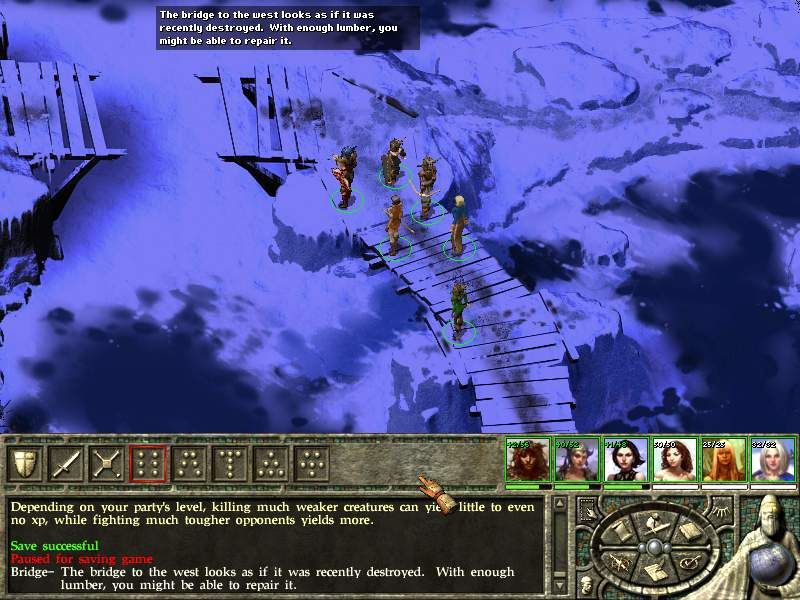
Baldur’s Gate is one of the games that revolutionised the CRPG genre, creating the isometric CRPG subgenre, along with Fallout. It helped usher in a new golden age for RPGs, which also saw the beginning of the isometric ARPG subgenre with Blizzard’s Diablo and, later, the immersive CRPG subgenre with Bethesda’s Elder Scrolls: Morrowind.
The Baldur’s Gate series would transcend its engine and subgenre with an isometric ARPG spinoff: Baldur’s Gate: Dark Alliance. Developed by Snowblind Studios and released in 2001 for the PlayStation 2 and ported to the Xbox the following year, the player must choose between three characters and do several quests throughout the Sword Coast. The game also features a co-op multiplayer mode.
Dark Alliance led to the creation of Baldur’s Gate: Dark Alliance II, a sequel developed by Snowblind Studios and released in 2004 for the PlayStation 2 and Xbox. In this edition, players could select from five characters and embark on a mission to uncover the enigmatic storyline surrounding the main characters from the preceding game. The multiplayer mode that was popular in the prior game also made a return.
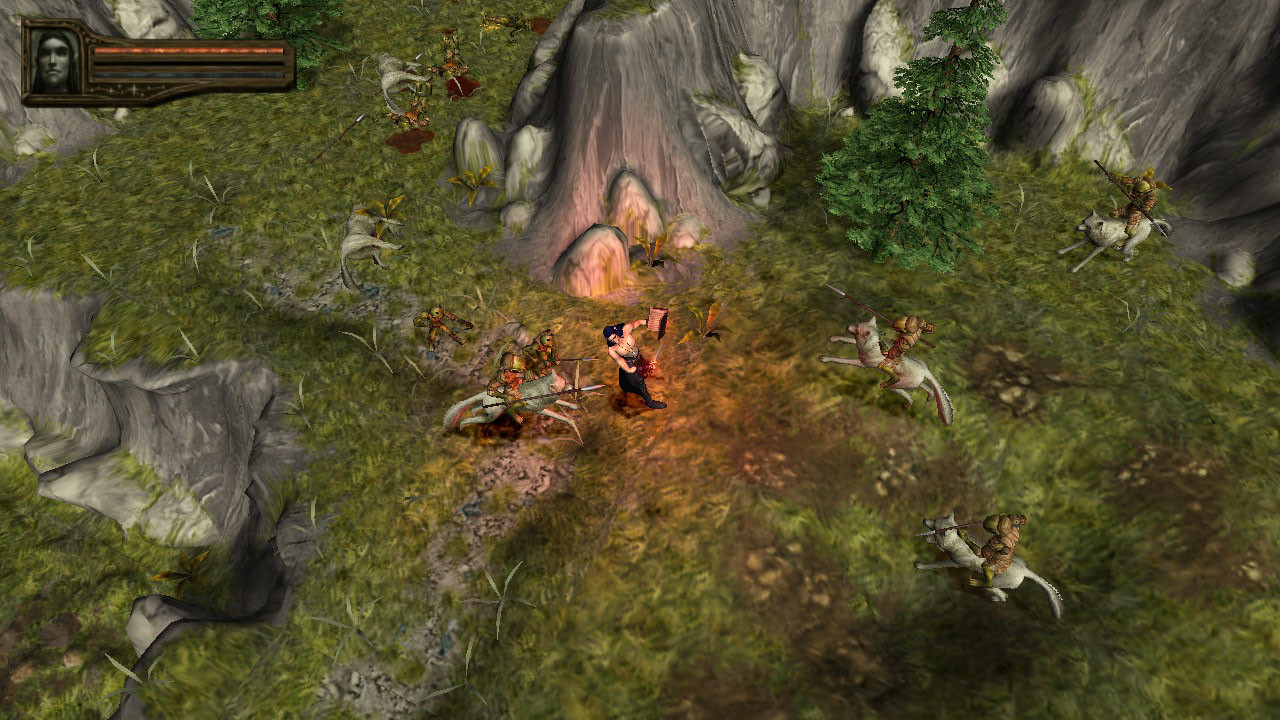
Dark Alliance II ended up being Interplay’s last D&D game due to their continued financial troubles that led to the closure of Black Isle Studios, the cancellation of several projects (including a third Baldur’s Gate game), the end of the relationship with BioWare and the loss of the D&D license, which led to the resignation of its CEO, Brain Fargo, and the selling of several of their IPs, like Fallout.
The Atari Era Part 1: The Dawn of a New Era
When Hasbro/WotC acquired TSR and gained ownership of D&D, the intention was for Hasbro Interactive/Atari to develop and publish D&D video games. However, Interplay’s firm control over the license posed challenges. This ultimately led to two significant developments: the acquisition of Hasbro Interactive/Atari by Infogrames, which later became a subsidiary of the latter and continued to use the Atari brand while publishing D&D games, and the decision to focus mostly on existing IPs rather than developing original ones. This involved licensing these IPs to other developers and publishers.
In 2001, Pool of Radiance: Ruins of Myth Drannor was released for Windows. Developed by Stormfront Studios and published by Ubi Soft, the game is an isometric CRPG where the player creates a party of adventurers in New Phlan, in the Forgotten Realms, where they’re tasked by Elminster to travel to Myth Drannor to stop the machinations of a powerful dracolich and a sorceress queen. The game features turn-based combat and three-dimensional characters over pre-rendered two-dimensional backgrounds.
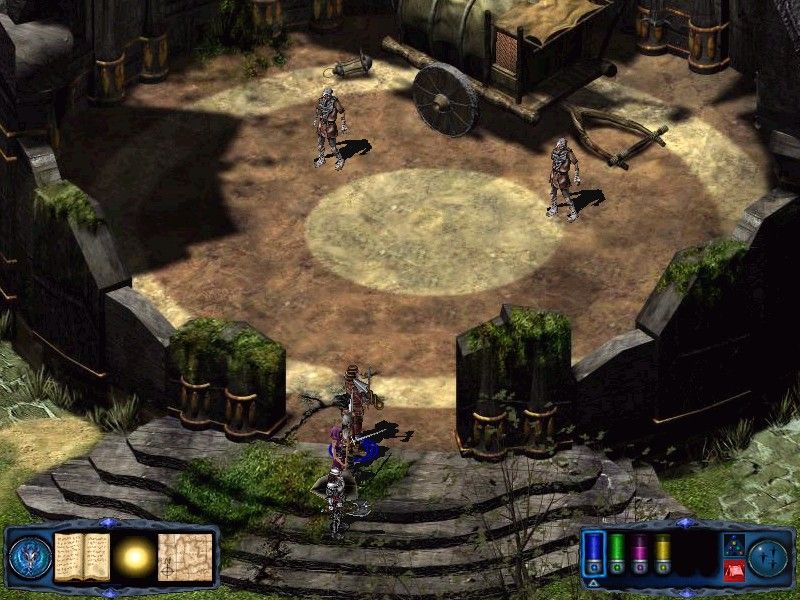
In 2002, Dungeons & Dragons: Eye of the Beholder was released for the GameBoy Advance. Developed by Pronto Games and published by Infogrames, this game is a remake of the original Eye of the Beholder. Using a stripped-down version of the D&D 3rd edition ruleset, the player creates a party of four adventurers, ranging between four base classes and seven races. This remake features first-person exploration like the original game but turn-based combat in an isometric overhead perspective.
In the meantime, BioWare was busy developing the Aurora Engine, a more advanced engine than the Infinity Engine featuring full 3D environments, real-time lighting and shadows, surround sound and a better adaptation of the D&D 3rd edition ruleset. The engine was used to develop their next game, Neverwinter Nights (not to be confused with the MMORPG mentioned earlier), which was supposed to be published by Black Isle Studios. However, after its closure, BioWare approached Infogrames to publish it.
Neverwinter Nights debuted in 2002 for Windows before being ported to Linux and Macintosh the following year. Published by Infogrames under the Atari brand, this isometric CRPG unfolds in the Forgotten Realms. Players are tasked with creating or selecting an adventurer, who journeys to the city of Neverwinter to aid Lady Aribeth de Tylmarande, a paladin seeking to combat the dreaded plague known as The Wailing Death.

The game boasts a thrilling multiplayer mode that allows each server to accommodate up to 96 players simultaneously, with one player having the opportunity to assume the role of the DM by using the Dungeon Player Client to take command of the server. Additionally, the game comes equipped with the powerful Aurora Toolset, enabling the creation of modules for both single-player and multiplayer modes. Notably, by the end of 2002, the game had an impressive collection of over 1,000 custom modules available.
The first expansion, Neverwinter Nights: Shadows of Undrentide, arrived in 2003. It introduced thirty new quests, sixteen additional creatures, fifty fresh spells, and five new prestige classes: Arcane Archer, Blackguard, Assassin, Harper Scout, and Shadow Dancer. Players can forge a new adventurer or import a character from the base game, who becomes a student of the renowned dwarven adventurer, Drogan Droganson, who’s ambushed by a band of kobolds who pilfer several artefacts. Subsequently, the player bands with other students to reclaim the stolen relics across three chapters.
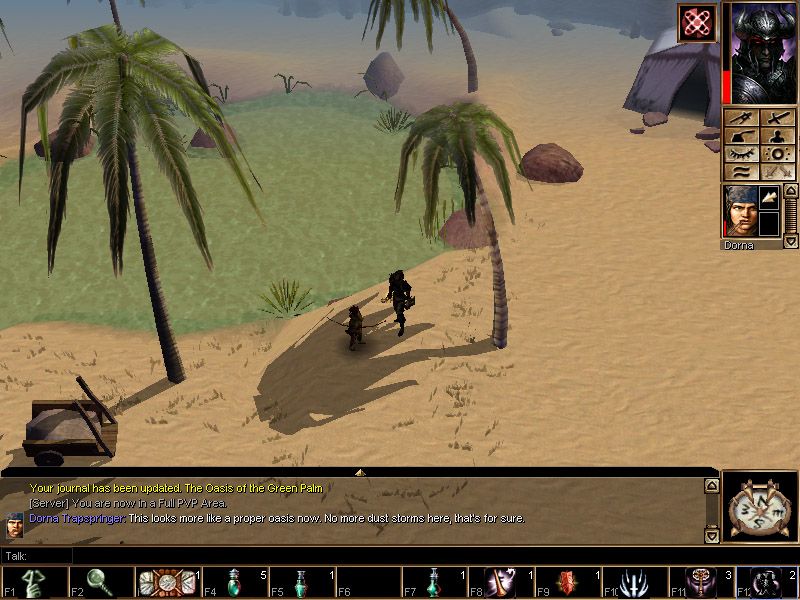
Neverwinter Nights‘ second expansion, Neverwinter Nights: Hordes of the Underdark introduces a new campaign with six new prestige classes (Pale Master, Shifter, Weapon Master, Champion of Torm, Red Dragon Disciple and Dwarven Defender), sixteen new creatures, four new tilesets, over fifty new feats, over forty new spells, new music and voices, the ability to hire two henchmen and raise the level-cap to 40. The player must now travel to the Undermountain to look for the wizard Halaster.
The third expansion, Neverwinter Nights: Kingmaker was released in 2004. It’s a collection featuring three prestige modules: Kingmaker, ShadowGuard and Witch’s Wake. In Kingmaker, the player travels in a group with a Wererat, a Dryad, a Rakshasa and an Azer and the goal is to reach the Keep of Cyan which is ruled by evil forces. In ShadowGuard, the player plays as the son of the Magistrate of the imperial city of Ghaarak, who was invited to join the mysterious organization Shadowguard. In Witch’s Wake, the player wakes up on a battlefield next to a dying prince, who asks to deliver a message to his father, the king.

In 2003, Atari developed and released Dungeons & Dragons: Heroes for the Xbox. It’s an ARPG set in Greyhawk, one of the first D&D campaign settings, where up to four players control a cleric dwarf, a human fighter, an elf wizard and a halfling rogue, who were reincarnated to fight their old enemy: the wizard Kaedin.
Also in 2003, The Temple of Elemental Evil was released for Windows. Developed by Troika Games and published by Atari, it’s an isometric CRPG set in Greyhawk. Based on the 3.5 edition ruleset, the player must create a party of five adventurers who must delve into the eponymous temple. It features turn-based combat and it’s considered one of the best adaptations of a D&D ruleset.
In 2004, Forgotten Realms: Demon Stone was released for the PlayStation 2, Xbox and Windows. It’s an ARPG developed by Stormfront Studios and published by Atari. Written by R.A. Salvatore, the player controls three adventurers, the fighter Rannek, the sorcerer Illius and the rogue Zhai, who accidentally release two evil warlords from their imprisonment in a Demon Stone and must now find a way to defeat and imprison them again.

Floodgate Entertainment, the studio behind Shadows of Undrentide, adapted Neverwinter Nights as an ARPG for mobile phones under the title, Neverwinter Nights: Mobile, released in 2004. Unfortunately, it was discontinued around 2011.
Between 2005 and 2006, three more premium modules were released for Neverwinter Nights: Pirates of the Sword Coast, Infinite Dungeons and Wyvern Crown of Cormyr. In Pirates of the Sword Coast, the player retrieves a cursed statue from Neverwinter and must find a way to lift the curse before it destroys the entire Sword Coast. In Infinite Dungeons, the player travels again to the Undermountain, under the city of Waterdeep. Wyvern Crown of Cormyr features fully ridable horses, flowing cloaks, tabards and long coats, extensive new art, creatures, tilesets and a new prestige class, the Purple Dragon Knight.
Other three premium modules were planned for release but were cancelled in favour of the sequel, Neverwinter Nights 2, although two would be released for free, years later.
The Atari Era Part 2: Back to Neverwinter (and other 2000s titles)
Released in 2005, Dungeons & Dragons: DragonShard is an RTS game developed by Liquid Entertainment and published by Atari for Windows. Set in the Eberron setting, the game features three factions and their respective campaigns: the Order of the Flame, the Lizardfolk, and the Umbragen. The story revolves around the discovery of The Heart of Siberys, a source of unlimited power and the three factions battle each other for that source.

Released in 2006, Dungeons & Dragons Online: Stormreach is an MMORPG developed by Turbine (currently Standing Stone Games), published by Atari and also set in Eberron. It allows players to immerse themselves in PVE content or test their skills against others in PVP battles. Notably, in 2006, it transitioned to a free-to-play model now known as Dungeons & Dragons Online: Eberron Unlimited. Since 2012, the game has seen the release of eight expansions, with a ninth planned for 2024.
Meanwhile, Obsidian Entertainment, a developer studio founded by former Black Isle employees, crafted Neverwinter Nights 2 at the request of Atari, with support from BioWare. Originally utilizing the Aurora Engine, the shift to the Electron Engine was executed to facilitate DirectX compatibility.
So, in 2006, Neverwinter Nights 2 was released for Windows and later ported to Macintosh in 2008. Set in the Forgotten Realms, the player creates an adventurer using the 3.5 edition ruleset. It features sixteen races and twelve classes available plus seventeen unlockable classes, recruitable NPCs, real-time with pause combat, a multiplayer mode and a toolset for module creation. The story revolves around the village of West Harbor, which after being attacked by a group of githyanki, recruits the protagonist to discover the connection between the attack and a mysterious silver shard.

Neverwinter Nights 2 received three expansions: Mask of the Betrayer, Storm of Zehir and Mysteries of Westgate, all equally published by Atari.
Neverwinter Nights 2: Mask of the Betrayer was released in 2007. It introduces two new elven races, four types of genasi, two new base classes, five new prestige classes, and more than 100 new feats and spells, raising the level cap to 30. The protagonist of the base game returns, but is now afflicted with a curse that forces them to consume souls. The protagonist must find a way to lift the said curse and face the Red Wizards of Thay.
Neverwinter Nights 2: Storm of Zehir was released in 2008. It introduces two new races, three new classes, an Overland Map option for travelling and exploration and the ability to create a party of four adventurers (along with two NPCs). The story revolves around exploring the Samarach and Sword Coast regions, after the ship the party travelled on, shipwrecks.
Neverwinter Nights 2: Mysteries of Westgate was developed by Ossian Studios and released in 2009. In it, the player creates a new adventurer who finds a cursed mask in a dungeon and must travel to Westgate to find a way to lift the curse with the help of three NPC companions. It features four new monster types, new music and a new sewer tileset.
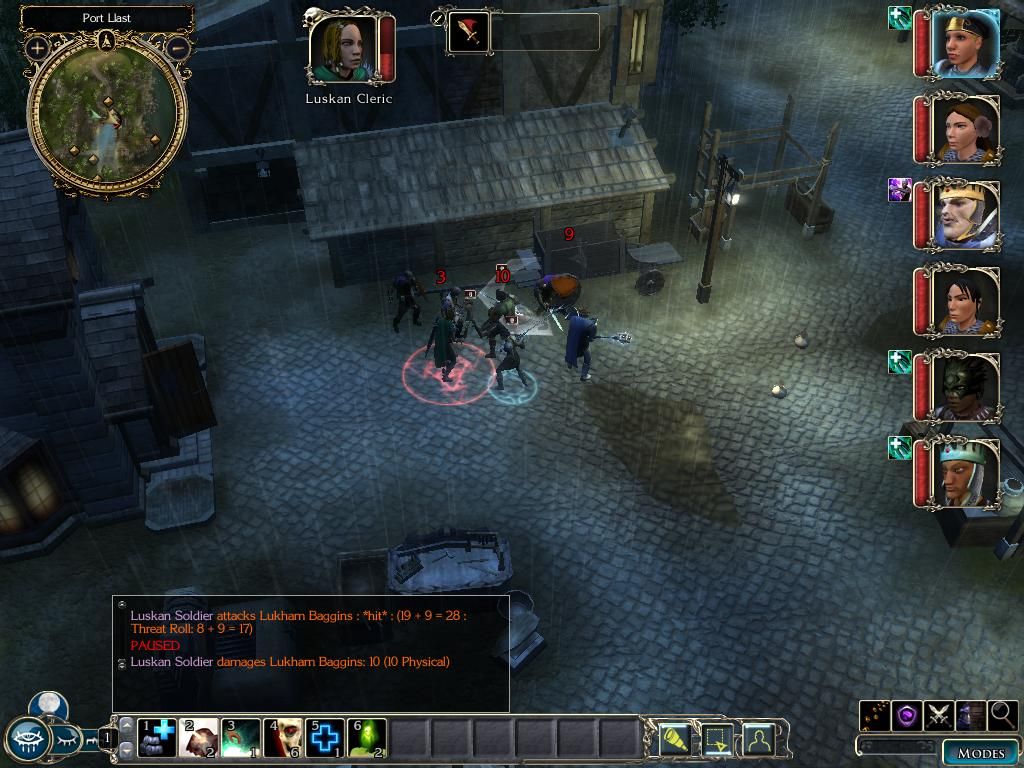
In 2007, Dungeons & Dragons: Tactics was released for the PSP. Developed by Kuju Entertainment and published by Atari, it’s a tactical RPG set in the Greyhawk setting. The player creates or selects a main hero and a party of initially five companions (which can go up to eleven by the end of the campaign) by choosing between eleven core classes plus two non-core classes, taken from the 3.5 edition ruleset. The main campaign occurs in the region of Lindale, where the main hero is investigating an ancient being.
In 2008, Dungeons & Dragons: Tiny Adventures debuted on Facebook. This game, developed by WotC, allowed players to craft their adventurers and team up with friends to embark on quests. Each character’s energy was spent on various actions, such as moving, attacking, and casting spells. While energy naturally regenerated over time, players could also request energy from friends. Unfortunately, the game was discontinued in 2010 due to disputes between WotC and Infogrames/Atari over licensing rights.
The 2000s proved to be a fruitful decade for D&D video games, despite ongoing issues with licensing and legal disputes involving Interplay, and the acquisition of Atari by Infogrames. However, the subsequent decade did not witness the same success for original D&D-licensed video games. Instead, it became a prolific era for remakes, remasters, and indie CRPGs.
The Atari Era Part III: Nostalgia Reigns Supreme
In 2011, Dungeons & Dragons: Heroes of Neverwinter debuted on Facebook. Crafted by Liquid Entertainment, this tactical RPG allowed players to fashion an adventurer from four races (human, halfling, eladrin, and Dragonborn) and four classes (fighter, wizard, cleric, and rogue). Once created, players could rally up to three pre-generated companions or enlist characters fashioned by friends to partake in numerous quests, with a special emphasis on combat. Regrettably, the game was discontinued in 2012.

Also in 2011, Dungeons & Dragons: Daggerdale was released for Windows and the Xbox 360, and ported to the PS3 the following year. Developed by Bedlam Games and published by Atari, it’s an ARPG set in the Forgotten Realms. In it, the player chooses between four characters: a human male fighter, a dwarf male cleric, a halfling male wizard and an elf female ranger and must defend the Dalelands from the evil wizard Rezlus and the Zhentarim. The game also features a four-player co-op mode.
2012 proved to be a captivating year for CRPGs. Not only did Atari revisit some of their most beloved titles, but a significant event with far-reaching implications for the future also unfolded, as I will delve into in the following chapter. Meanwhile, Canadian developer Beamdog initiated discussions with Atari and WotC regarding revitalising the Infinity Engine, aptly named the Infinity Enhanced Engine, for remastered editions of the classic Infinity titles.
The initial remaster, Baldur’s Gate: Enhanced Edition was brought to life by Overhaul Games and released by Atari and Beamdog in 2012 for Windows. Later on, it was also made available on Mac, Linux, Android, and iOS platforms. This rendition boasts cross-platform multiplayer support, matchmaking capabilities, and compatibility with higher resolutions and various viewing modes including widescreen. Additionally, it incorporates enhancements from Baldur’s Gate II, such as prestige classes, the introduction of three new recruitable NPCs and a fresh new adventure labelled The Black Pits.

The next remaster was Baldur’s Gate II: Enhanced Edition, developed by Overhaul Games and published by Atari and Beamdog in 2013. Apart from the new features introduced in the previous remaster, it also features four new companions, new locations, new sidequests and a new adventure called The Black Pits 2: Gladiators of Thay.
In 2014, Icewind Dale: Enhanced Edition successfully launched on multiple platforms, including Windows, Linux, Android, iOS, and Macintosh. Developed by Overhaul Games and published by Atari, this rendition brings a wealth of new features from the Baldur’s Gate remasters. It significantly enhances the gaming experience with six expanded quests, originally omitted content, sixty new items, and the half-orc as a playable race.

The last of the Infinity Enhanced remasters was Planescape: Torment Enhanced Edition, released in 2017. Developed by Overhaul Games and published by Atari for Windows, Linux, Macintosh, Android and iOS, it introduces all the new features in the previous remasters, like high-resolution support, remastered music, bug fixes and other quality-of-life improvements.
But it was around this time that Atari/Infogrames ended their partnership with Hasbro/WotC, who later simply licenced D&D to any interested developer and publisher. But before continuing the rest of the decade, let’s take a short but important detour.
The Modern Era Part I: The Revolution will be Kickstarted
After leaving Interplay, Brian Fargo founded InXile Entertainment in 2002 and in 2003, he acquired the rights to Wasteland from Electronic Arts. But it would be in 2012 that InXile launched a Kickstarter campaign to crowdfund the production of Wasteland 2. With an initial minimum goal of $900,000, it ended up with a total of $2,933,252. Wasteland 2 was released the following year with critical success and opened the door for other developers to self-publish their projects with crowdfunding.

Another developer that adopted Kickstarter was Larian Studios, a Belgian studio known for the Divine Divinity ARPG series. With the help of Kickstarter, Larian released Divinity: Original Sin in 2014 and Divinity: Original Sin II in 2016. They’re both turn-based isometric CRPGs, in the same vein as Baldur’s Gate, and were both critically acclaimed, with the second game considered one of the best CRPGs ever.
InXile Entertainment also released Torment: Tides of Numenera in 2017, again crowdfunded through Kickstarter. Despite being based on the Numenera TTRPG, it’s considered a spiritual successor to Planescape: Torment.
Obsidian Entertainment also dipped its toes in crowdfunding and released Pillars of Eternity in 2015, and its sequel, Pillars of Eternity II: Deadfire and Tyranny in 2016. They’re also isometric CRPGs in the same vein as Baldur’s Gate.
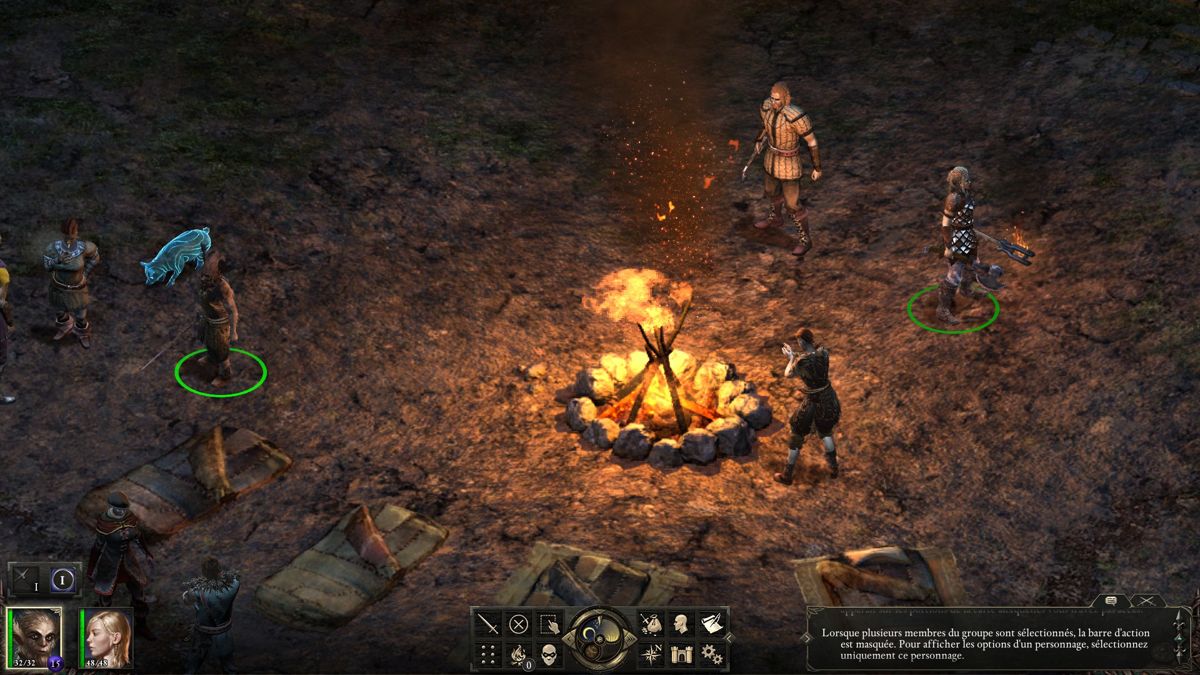
Other independent studios followed suit and not only released CRPGs based on several other TTRPGs but also based on D&D, under the Open Game License (OGL). The OGL is a public copyright license for homebrew campaigns and settings (like the 1st edition of Pathfinder). It originally was used for TTRPGs but with the Kickstarter Revolution, it was also used for creating unofficial games with homebrew D&D rulesets.
Some of these OGL games were: Knights of the Chalice, Low Magic Age, Worlds of Magic, Sands of Slumber, Pathfinder: Kingmaker, Pathfinder: Wrath of the Righteous, and Solasta: Crown of the Magister (although its developer, Tactical Adventures, got their own license from WotC), among many others.
Around this time, streaming channels and podcasts (like Critical Role) started to broadcast live plays of D&D and other TTRPGs, which grew in popularity and helped bring D&D and CRPGs back to the mainstream and influenced the final game of this retrospective.

The Modern Era Part II: From the 2010s to the Present
Like I said before, with Atari/Infogrames no longer publishing D&D video games, WotC simply licensed D&D to any willing developer and publisher.
In 2013, a new, free-to-play MMORPG was released for Windows. Developed by Cryptic Studios and published by Perfect World Entertainment until 2022, when Gearbox Entertainment publishes it to the present, Neverwinter is originally set in the Forgotten Realms. The player creates an adventurer out of eight classes and engages in PVE and PVP content in and around Neverwinter. It released 30 updates so far, with the latest in 2023.
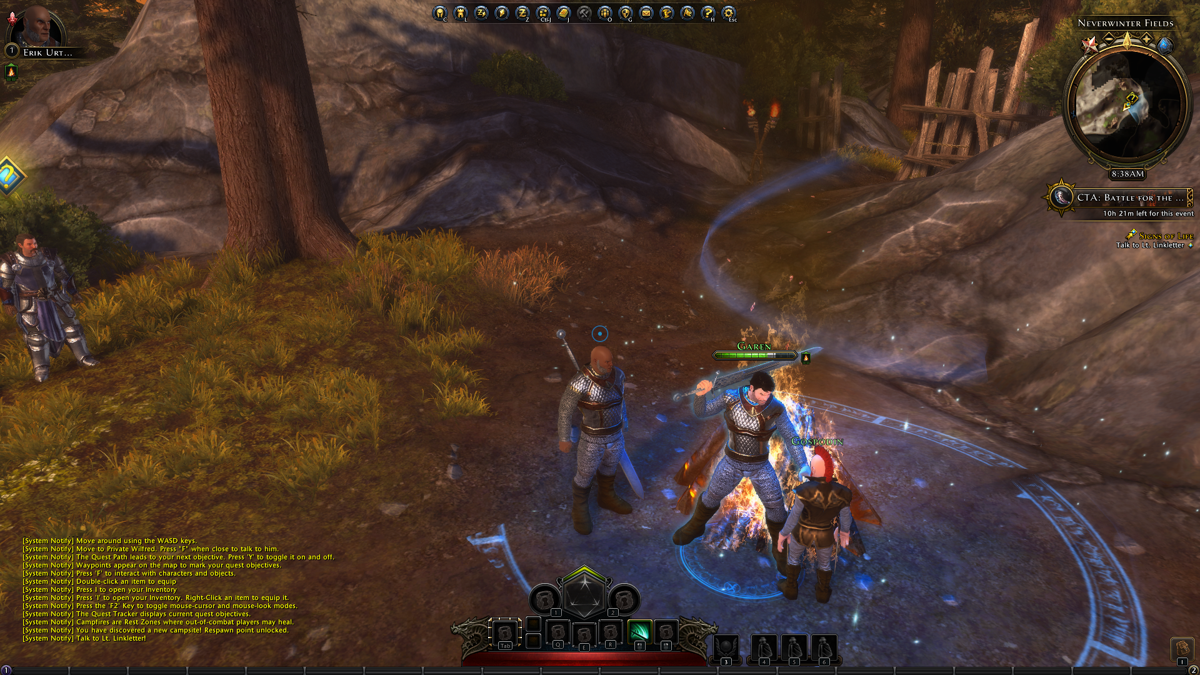
Lords of Waterdeep is a digital board game released in 2013 for iOS. Developed by Playtek and published by WotC, it’s an adaptation of the physical board game of the same name. In it, two to five players (who can be AI-controlled) take the role of an anonymous Lord and try to increase their influence on Waterdeep by completing quests, constructing buildings and sabotaging the other players.
Released in 2015, Sword Coast Legends is an ARPG developed by n-Space and published by Digital Extremes. The player creates an adventurer out of five races and six classes and embarks on a single-player campaign or tangle with the DM mode, where the player could develop campaigns and share them with other players (until the servers were taken down in 2018).

Baldur’s Gate Enhanced Edition received a new, original expansion, Baldur’s Gate: Siege of Dragonspear. Developed and published by Beamdog in 2016, it occurs between the first and second game where the player faces a new enemy, The Shining Lady, threatening the lands north of Baldur’s Gate with her army. It features four new companions and visual improvements.
Released in 2017, Idle Champions of the Forgotten Realms is an incremental game developed and published by Codename Entertainment. The player initially gets some free characters to form a party and face waves of enemies, that when defeated, drop currency which can be used to upgrade the player’s characters or unlock new, more powerful ones. The characters range from iconic D&D characters to recent characters from other games and web series.
Also released in 2017, Tales from Candlekeep: Tomb of Annihilation is a digital board game based on the physical board game of the same name. Developed and published by BKOM Studios, the player controls a party of four pre-generated adventurers and must explore a series of dungeons in the peninsula of Cthult.

Released in 2018, Neverwinter Nights: Enhanced Edition is a remaster of the original Neverwinter Nights, developed and published by Beamdog using the Aurora Enhanced Engine. It contains all the content from Neverwinter Nights Diamond but with updated graphics, interface and other improvements. It also features 7 DLCs (Dark Dreams of Furiae, Darkness over Daggerford, Heroes of Neverwinter, Infinite Dungeons, Pirates of the Sword Coast, Tyrants of the Moonsea and Wyvern Crown of Cormyr) with new content and updates released between 2018 and 2020.
Released in 2021, Dungeons & Dragons: Dark Alliance is an ARPG developed by Tuque Games and published by WotC. Up to four players control a party of four iconic characters from the R.A. Salvatore novels: Drizzt Do’Urden, Catti-brie, Wulfgar, and Bruenor Battlehammer, and embark on several missions in Icewind Dale.
Released in 2020 in early access with the full release in 2023, Baldur’s Gate III is an isometric CRPG developed and published by Larian Studios. The player selects a pre-generated origin character or creates a new one using the 5th edition D&D ruleset. The story isn’t a direct sequel to Baldur’s Gate II but to a D&D module called Baldur’s Gate: Descent to Avernus. A Mind-Flayer ship abducts several people from Baldur’s Gate, including the player character, who are infected with a tadpole, threatening to turn them into Mind-Flayers. The player must escape the ship, recruit other infected companions and find a way to cure the infection.
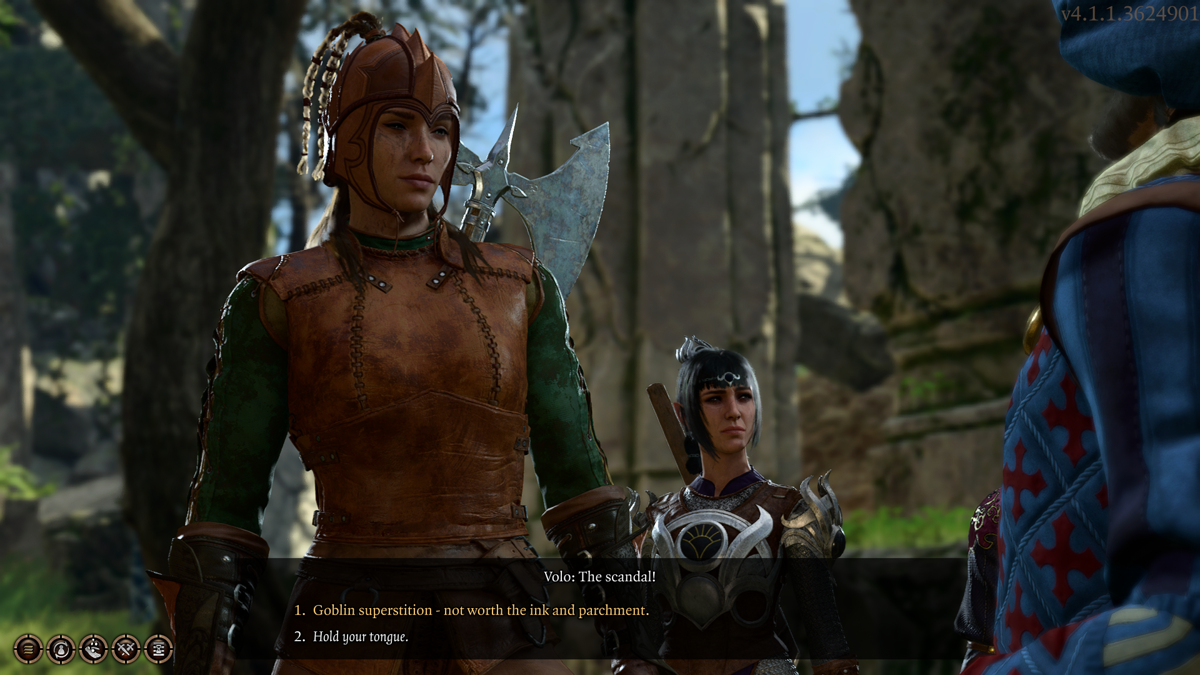
The Future
Baldur’s Gate III had an enormous success among players and critics alike (it won almost every video game award it was nominated for in 2023) and it’s probably considered one of, if not, the best CRPG ever made. Still, Sven Vincke, Larian Studios’ CEO, announced that they won’t work on any expansion, DLC or sequel for it.
However, Hasbro wants to capitalise on Baldur’s Gate III‘s success and committed over one billion dollars in video game development, intending to build its own internal game developer studio. However, it’s still a bit early to witness any possible influence, by the time of writing, in the video game scene, either indie or AAA, but the future does look promising.

Bibliography and Videography
These are all the references that I consulted for this article and other links of interest:
“Dungeons and Desktops: The History of Computer Role-Playing Games 2nd Edition” Barton, Matt; Shane, Stacks. A K Peters/CRC Press; 2nd edition (May 1, 2019) – highly recommend reading for any RPG fan.
A video detailing all the RPG subgenres by StefaNonsense – for those who have trouble understanding all the RPG terms, like CRPG, ARPG or JRPG.
The entire history of the RPG genre by NeverKnowsBest – The entire history of the genre, not just D&D, in video format.
The History of D&D Videogames by 90sgamer92 – a video resuming this article up to 2009.
Every Dungeons & Dragons Video Game Ranked From WORST To BEST by TripleJump – a list containing every D&D video game ordered by TripleJump’s criteria.
WilliamSRD YouTube channel– a YouTuber specialising in reviewing famous franchises’ lesser-known titles, including D&D.
Mortismal Gaming YouTube channel – a YouTuber specialising in reviewing modern CRPGs, although he sometimes reviews retro titles too.
St1ka YouTube channel– a YouTuber that reviews retro videogames, including retro RPGs.
Steam D&D store page – every D&D and D&D-inspired software currently sold on Steam.
GOG D&D store page – every D&D game currently sold on GOG.com.
D&D Computer Fantasy Game conversion by Dr. Gusman – a modern conversion of the Mattel D&D Computer Fantasy game to the ZX Spectrum. This is where I took the title image above.
So, I hope you’ve enjoyed this big retrospective on D&D video games and next time, we’ll continue our 50th-anniversary celebration by reviewing one of its landmark games. Which one? You’ll have to guess. I’ll try to post the review this year, so expect it between the end of the current year and the beginning of next year. Until then, keep on rolling and playing.
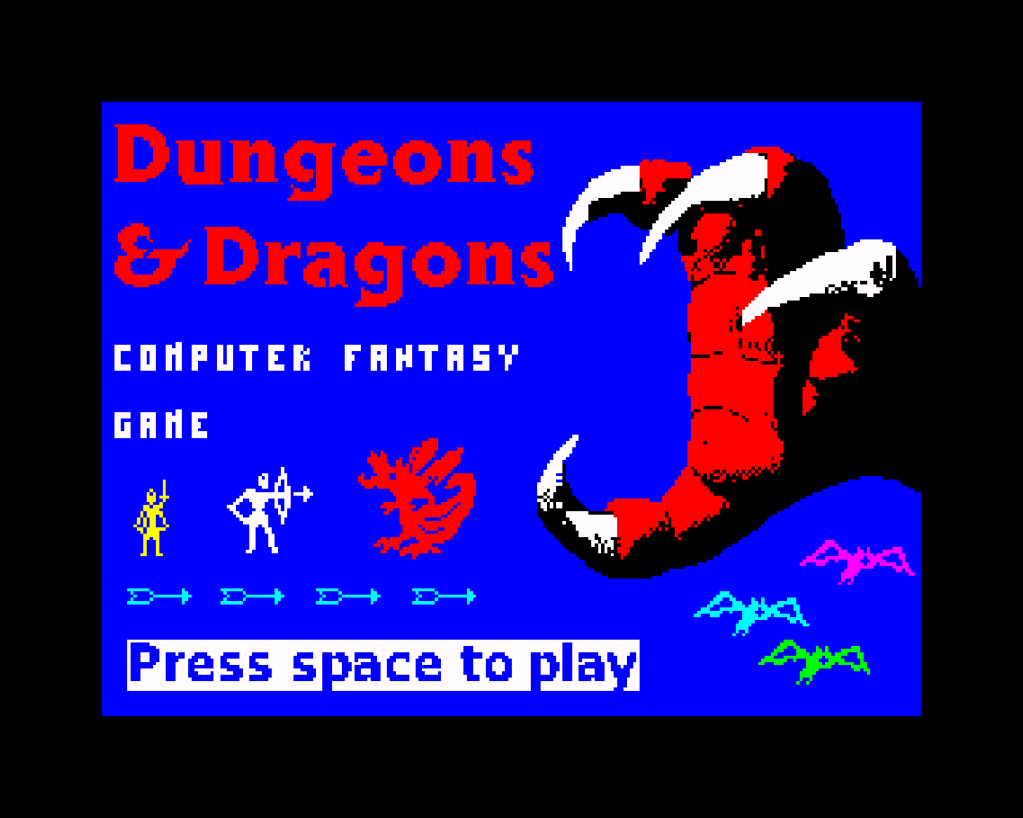



Leave a comment